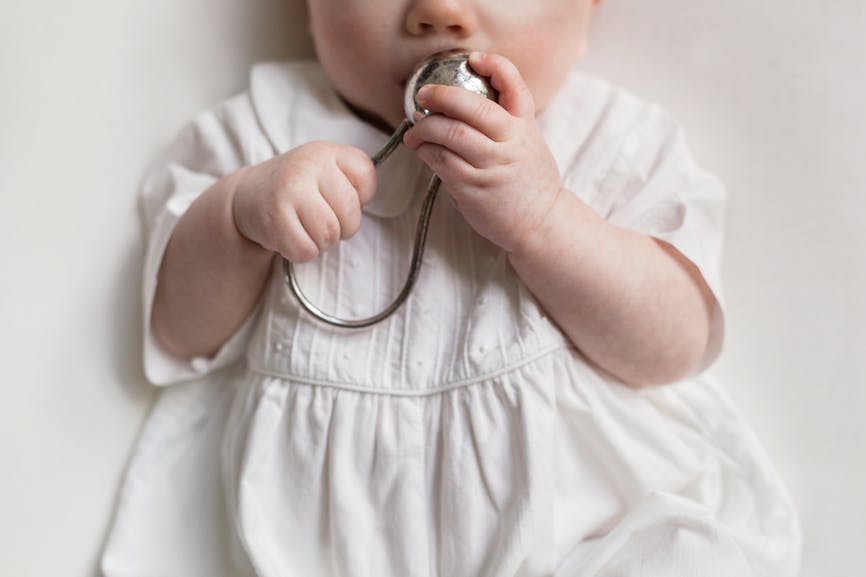Vintage British Nicknames
Vintage British nicknames are among the top loves of British baby namers. We use them, often automatically, to shorten names in a familiar way, and they have been essential for centuries as a way of distinguishing individuals with the same name.
We love them so much, many of them have now been elevated into full-name status, and happily litter the Top 100 most popular British names.
The most common are two-syllable, ie/y-endings we know and love well. Elizabeths are Lizzie, Olivers are Ollie, Evelyns are Evie and Fredericks are Freddie.
But more and more, parents are looking to a more brisk and quirky style of diminutive. Edwards are often Ted, rather than Eddy; some Henrys are Hal, and Christophers are increasingly known as Kit rather than Chris.
With this trend in mind, here is a rundown of some one-syllable diminutives that have become overlooked since they were developed in the Middle Ages. Several of them, perhaps surprisingly, were unisex.
Bess
In the 16th century, Bess was a popular nickname for Elizabeth. You could almost say that it was the diminutive for the name, as the most famous bearer, Elizabeth I, was known fondly as “Good Queen Bess“. It began to lose favour in the 18th century, but was revived as Bessie in the 19th. In some instances, Bess was also used as a diminutive for Beatrice.
Dodge / Hodge
Back in the 12th century, Rodge was a pet form of Roger, which developed into Dodge and Hodge. Several surnames have been created from both diminutives including Dodgson, Dodson, Hodgson, Hodgkin and Hodgett. Another diminutive for Roger (used by Dickens) is Rogue.
Gell
Both Gell and Gill are diminutives of Julian, used as both a masculine and feminine name in the Middle Ages. Both Julian, and the feminine Latinisation Juliana, were colloquially formed into Jelion, Jillian and Gillian, and it is from these vernacular pronunciations that Gell and Gill were derived. Joll, Jull and Jell were also used.
Gib
Gilbert has been used in Britain since it was brought over by the Normans. Gibb was an early pet-form, and has given rise to surnames like Gibben, Gibling and Gibson. Gil was also used as a diminutive, and from Gib, we also find the variant Gipp.
Hal
After the Norman Conquest, Henry became a popular import. In English, the name was pronounced as Herry or Harry, and from these sprung the diminutives Hen, Han and, more famously – thanks to Shakespeare‘s Henry V – Hal.
Hitch
We may be more familiar with Rich, Rick or Dick, but the Middle Ages gave us many more vintage British nicknames for Richard. Hitch, for example, was a common diminutive in the 13th century. Other forms include Hick, Higg and Digg.
Hud
Many Huds today are shortened from Hudson, but, of course, Hudson itself takes its origins from a “son of Hud”. Although unused now, Hud was once a very common pet-form of Hugh, one of the most classic British names.
Jep
Jep and Gepp were Medieval nicknames for the popular Geoffrey. It is now more familiar from the surname Jepson.
Jem
Jem was a popular short form and vernacular pronunciation of James. Examples have been found of women named Jemme and Gemme dating from the 13th century showing that, at this time, James was possibly both a masculine and feminine name. Jem is now also used as a shortening of Jemima.
Kit
In the Middle Ages, Kit was used as a nickname for both Christopher (famously used by the playwright Christopher “Kit” Marlowe) and Katherine. There is some evidence that it was also used for Christiana.
Moll
From the 13th century Mall and Moll were used as pet-forms of Mary, which had gained popular usage in Britain in the 12th century. Moll became Poll, and, thus, Molly and Polly.
Ned
Edward can be found shortened to Ned at least as early as the 14th century. The popular folk story is that the phrase “mine Edward” or “mine Ed” was rendered later to “my Ned.” Other examples given include Nan (Anne), Noll (Oliver), Nalle (Alice) and Nell (used as a feminine and masculine pet-name for Ellen and Ellis).
However, this theory does not explain the concurrent use of Ted, and, as the other names in this post show, rhyming variations by changing initial letters were common.
Pip
Pip is a short form of Philip, used as both a masculine and feminine name in the Middle Ages (feminine use was often Latinised as Philippa even though the women were actually called Philip). Phipp was also used as a pet-form. Earlier examples of Pip were most likely from Pepin.
Tam
Tam was a medieval a variant of Tom, a pet-form of Thomas, used particularly (and still is) in Scotland. It was also sometimes found as a pet-form of Tamsin, itself a vernacular form of Thomasina.
Tib
In the 13th century Tibb was used for both Theobald (commonly pronounced tib–old) and Isabel/la. Tibb for Theobald also became Tebb and Tipp, while Bel, Bibb, Ibb, Nibb and Libb were also used for Isabel.
With time, Theobald began to decrease in usage while Isabel/la remained popular. Tibb, therefore, became more often used on females, and by the 16th century, we find “Tib” also used as a term for a young girl, and used as a counterpart to Tom. Tib-cat was used for female cats, as tom-cat was used for males.
Later we also find female cats known as Tabitha, which would explain the use of Tibby as a nickname for Tabitha. Maud Hart Lovelace used Tib as a nickname for Thelma in Betsy–Tacy and Tib (1941).
Wat
Before there was Walt, Wat was the standard pet-form of Walter. Walter Raleigh‘s son Walter was nicknamed Wat to distinguish him from his father. It survives in surnames like Watkins, Watson and Watten.


